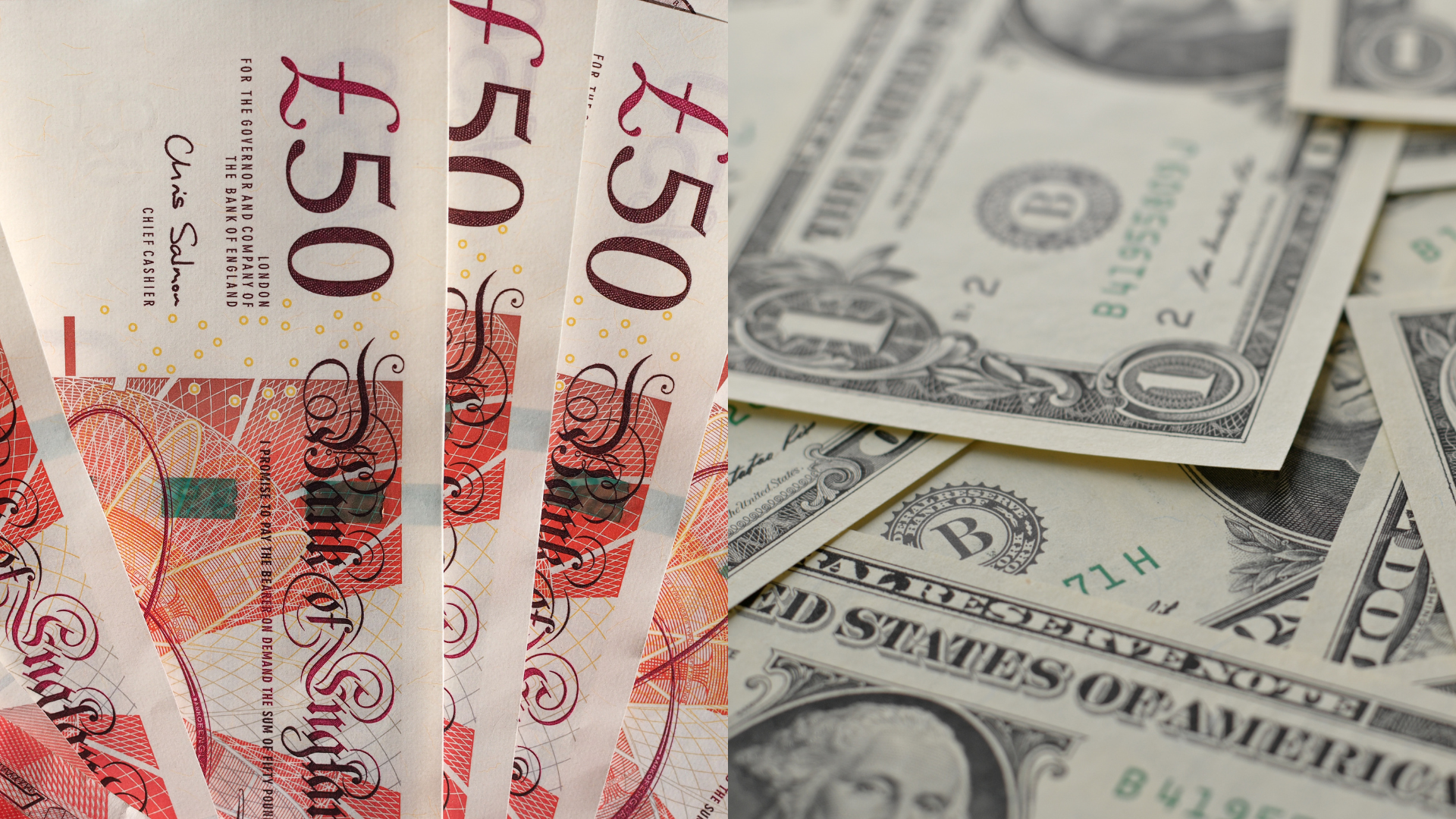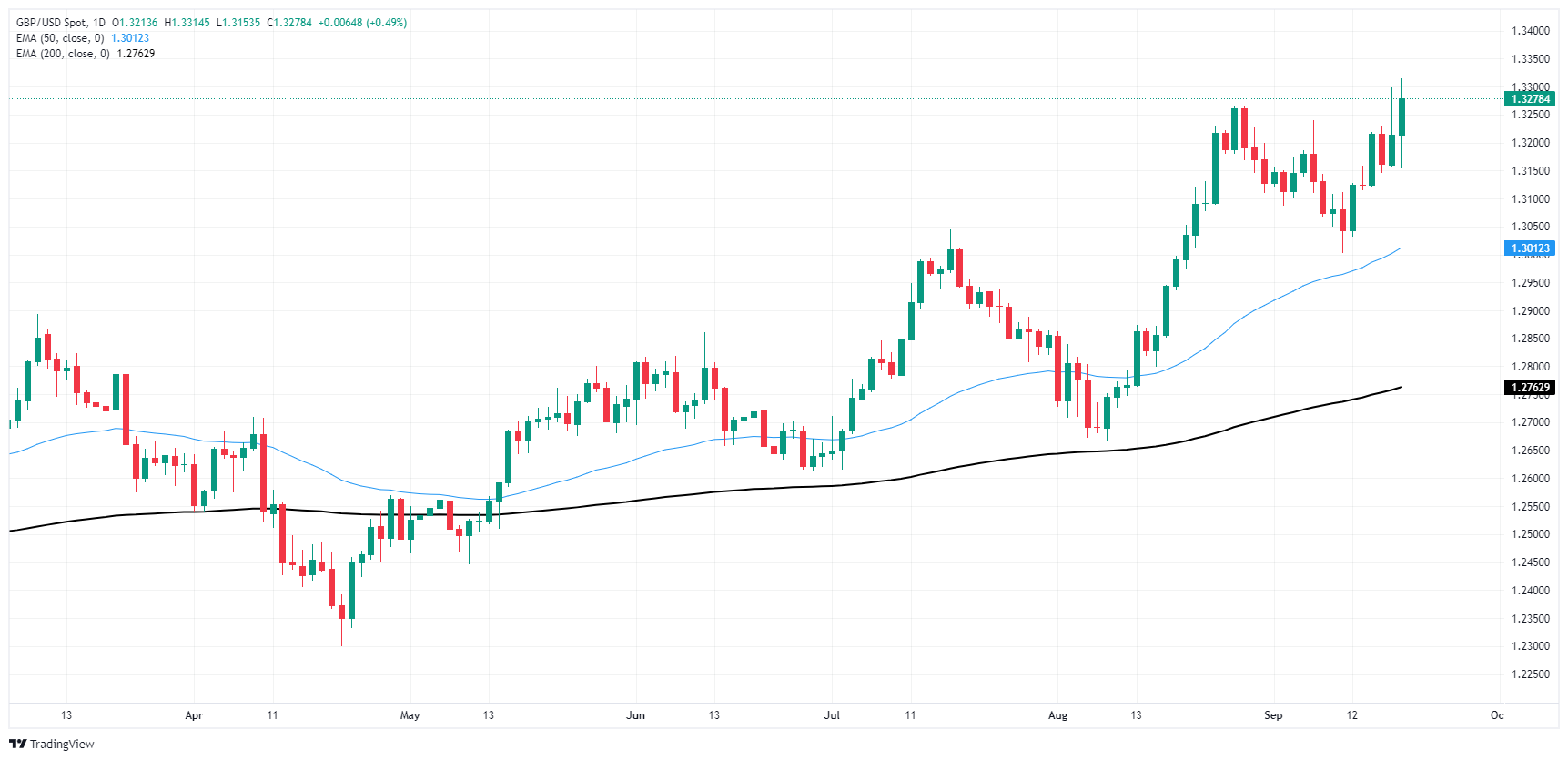
The GBP/USD pair surged to a fresh 30-month high on Thursday, briefly crossing the key 1.33 mark as the US Dollar remains under pressure following the Federal Reserve’s aggressive 50 basis point rate cut. This broader market selloff in the Greenback has bolstered the British Pound, despite a relatively muted response to the Bank of England's (BoE) decision to keep rates steady at 5.0%.
The Fed's move, framed by Chair Jerome Powell as a “recalibration” rather than a reaction to economic trouble, has fueled a risk-on sentiment across global markets, leading to a pullback in safe-haven assets like the US Dollar. Investors have responded by moving into higher-yielding currencies, driving the Pound Sterling higher. Despite the BoE's cautious stance, which saw policymakers holding off on further cuts to assess the state of the UK economy, the Pound has managed to maintain its upward momentum, largely thanks to external factors impacting the Greenback.
US economic data continues to be a mixed bag, with Initial Jobless Claims falling to 219K, outperforming the expected 230K, while the Philadelphia Fed Manufacturing Survey for September delivered a stronger-than-expected reading of 1.7, far surpassing the prior month's -7.0. Nonetheless, the Fed's dovish outlook has led to a broad reassessment of the US Dollar’s strength, keeping pressure on the currency and giving room for the GBP/USD to remain elevated.

As the pair hovers near the 1.33 level, the question remains whether this bullish trend can hold. The Pound is trading above the 50-day Exponential Moving Average (EMA) near 1.3000, signaling continued support for the pair, though the lack of strong domestic data could limit further gains. Traders are eyeing Friday’s UK Retail Sales report, which is expected to show a slight dip, but it may not have enough impact to push GBP/USD decisively in either direction.
For now, the GBP/USD remains buoyed by the ongoing weakness in the US Dollar, though further catalysts may be needed to drive sustained upward momentum.

















